In this issue we are going to look at many of the things that can be done to make your Model T safer to operate. Many of these things were done to the car originally, and for good reason. You don’t want expensive parts falling off unexpectedly, and you probably expect the car to steer, stop, and go when needed. In this case the word “safety” has two meanings; first, to make the car less dangerous; second, to secure something so that it cannot loosen or become disconnected.

Back in the day a mechanic uses the shop’s chain fall hoist to lift a car (not a Ford) up for servicing. OSHA was still decades in the future. The idea of using extra railroad timbers to support the car in case the hoist failed was probably in the interest of “safety”.
The Model T Ford is noted for it’s ability to vibrate. Many things on the Model T were secured originally with safety wire. Ford typically used brass safety wire. Today brass wire is hard to find, and pretty expensive, and not as strong as 302 stainless steel aircraft grade safety wire. Aircraft safety wire is available in many diameters and materials. We recommend MS-20995C; MIL-W-6713 .041″ wire as being most useful for the Model T.
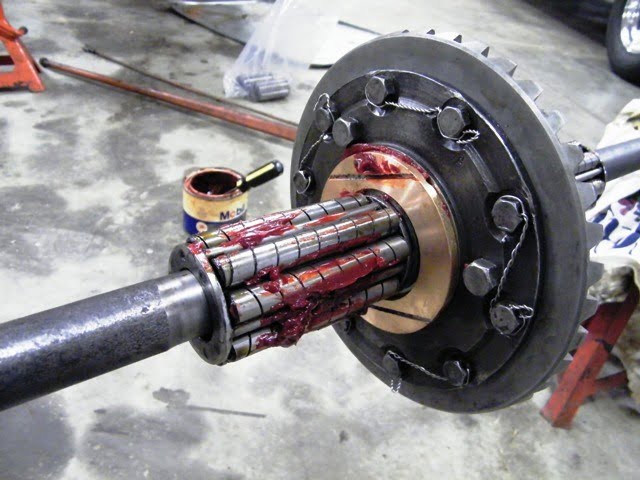
The pair of bolts shown at 12:00 position are safety wired backwards – not ideal. Ford originally just passed a single piece of brass wire through all the differential ring gear bolts. If you have worked on many of these you will have witnessed some these bolt heads hanging by safety wire after a bolt has sheared off. Or you will have seen complete and utter destruction caused by unsecured bolt heads being chewed up by the ring and pinion.
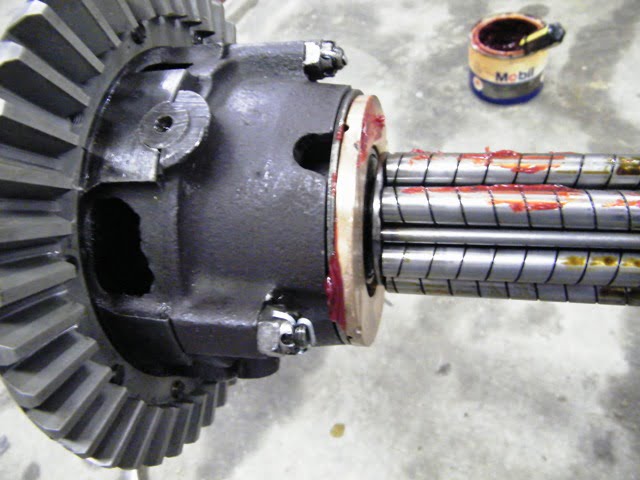
The differential bolts are secured by cotter pins. A typical Model T Ford should have cotter pins in dozens of locations if you want it to remain whole for very long.
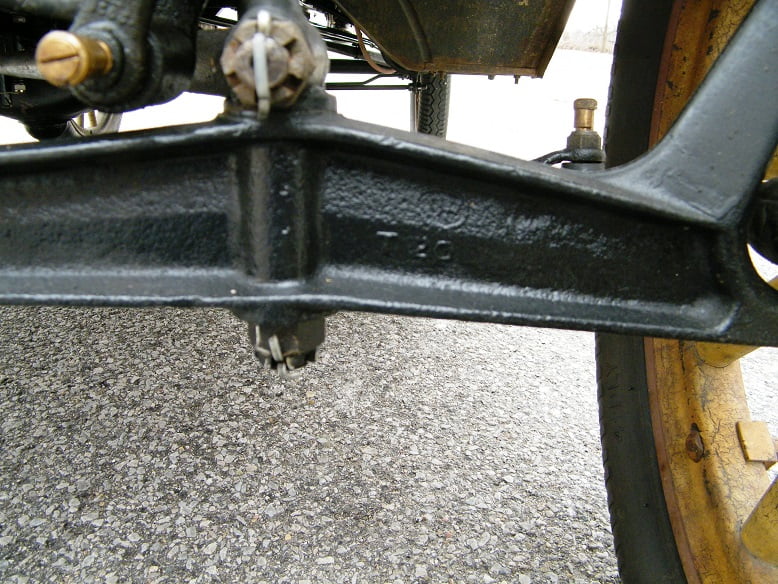
It is a good idea to inspect the front axle and steering components of any Model T prior to driving. Loss or failure of any of these cotter pins can make the car unsafe. You could lose the ability to steer the car which is not good!

Operating your Model T safely sometimes means that you need to be considerate of others. Every now and then check your rear view mirror. If you see a long line of modern cars you should pull off somewhere safe and let them pass. Otherwise some drivers might get frustrated and try to pass in an unsafe manner.
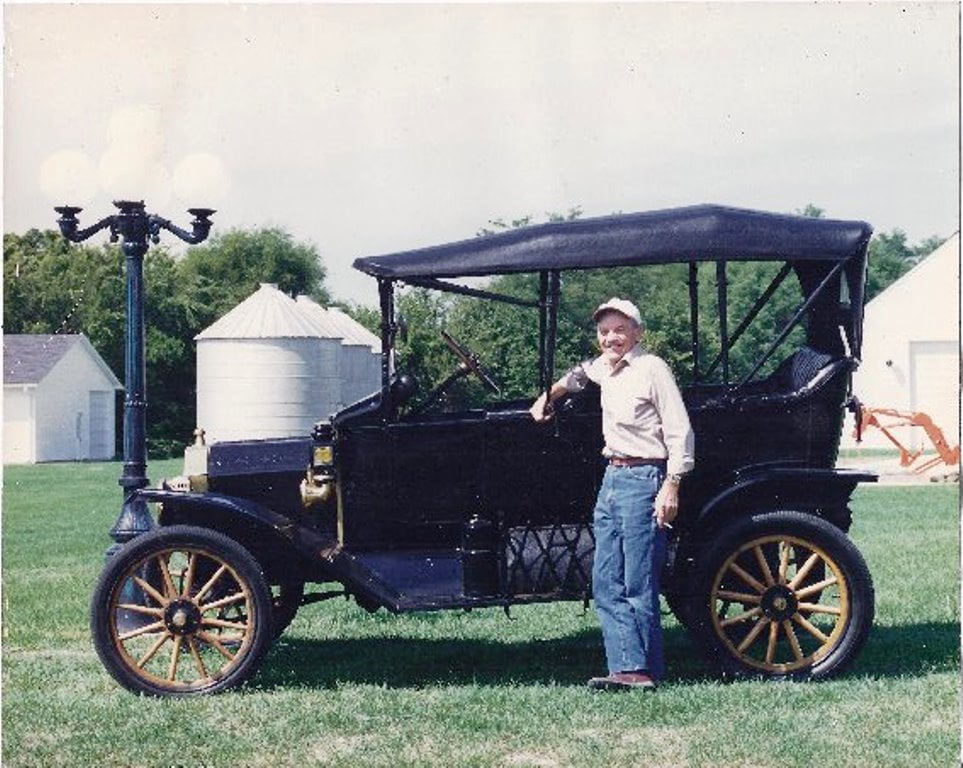
This is our good friend Paul who used to tour with us around the Cincinnati area. Paul had an incident with this 1914 touring that was caused by him forgetting to install a cotter pin. Fortunately he was not injured, but it was pretty embarrassing.

This is the location of the cotter pin that Paul forgot to install. After working on the rear wheel, Paul installed it and tightened the axle nut. Then he installed the hub cap. Everything was fine until one day on tour Paul noticed a Model T rear wheel passing him. His car suddenly tilted, and he was stuck in the middle of the road. The wheel continued down a hill and out of sight. The rest of the group muscled the car off the road, then started a search for the missing wheel. Eventually it was found and reinstalled. With a cotter pin this time.

Cotter pins are all over the rear axle assembly too. For some reason modern mechanics don’t always install cotter pins, thinking they are unnecessary. Those are the guys and gals you see looking for lost parts, or riding the vulture wagon back to the hotel.

Cowl lamps have a cotter pin devoted to making sure that the owner doesn’t ever lose one. Ford kept fantastic accounting records to determine the cost of every part of a Model T. The two cotter pins used to secure the cowl lamps cost $0.00174 in 1915. Yes, Ford accounting went to five decimal places! If Ford thought that eliminating those two cotter pins would save that amount of money per car, they would have.

You can see two more places that used cotter pins in this picture. The radiator on all but the earliest Model T’s is mounted with a spring arrangement. The nuts on the radiator mounts are not tightened fully; they are only screwed down until the cotter pin holes align. That way the lower radiator tank will not flex with the frame. If the nuts are over tightened the radiator can break as a result of the frame twisting. If the cotter pins are left out the spring tension causes the nuts to loosen and fall off.

Here are some more very important places for cotter pins. The steering bracket mounting bolts, the Pitman Arm, and the spark lever control rod all are secured with cotter pins. Any of these things coming loose while driving could be the beginning of a very bad day, or even your last day.
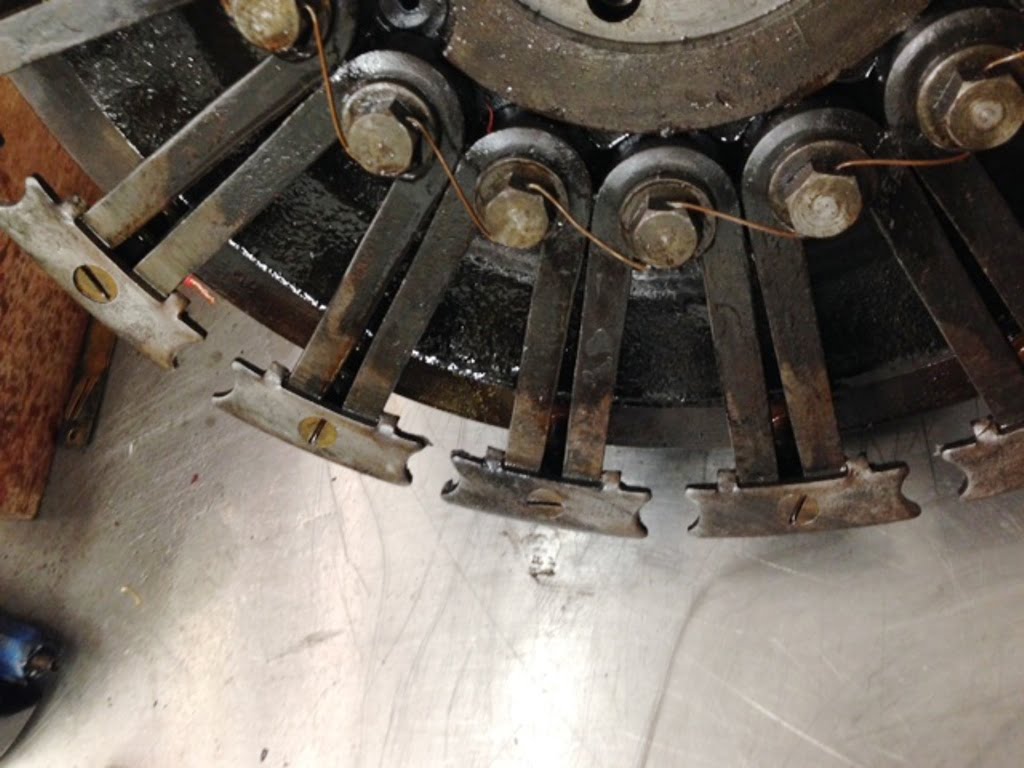
This photo shows a 1914 flywheel that is unmolested since Ford assembled it at the Walkerville plant in Canada. The brass lock wire goes through each of the flywheel bolts securing the inside of each magnet. Meanwhile the outer ends of each magnet is secured by a brass screw, The ends of the brass screws are “peened” which swells the screw into the hole. These screws, like any bolt or screw that is secured by peening, need to be thrown away any time they are removed.
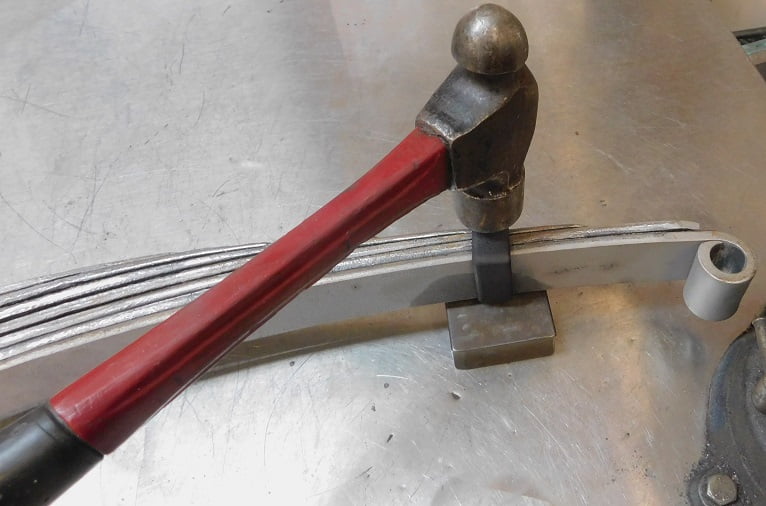
Peening bolts or screws is easy. A piece of steel backs up the screw or bolt that is going to be peened and then you hit the end with a hammer. 
The threads are swelled so that the nut won’t ever be able to vibrate and fall off.

Modern drivers will not know what to do if you stop in front of them without having a brake light. Most Model T’s did not come with a brake light originally. If you want to drive your Model T and not worry about being rear ended you need a brake light. You can add electric lighting to the kerosene tail light, or you can add one or more accessory lights. The possibilities are endless. It can be very inexpensive if you use a modern or reproduction lamp.

Having a functional brake light or lights means that you will need a brake light switch. Shown is a brake light switch purchased from Lang’s Car Parts that mounts to the frame.
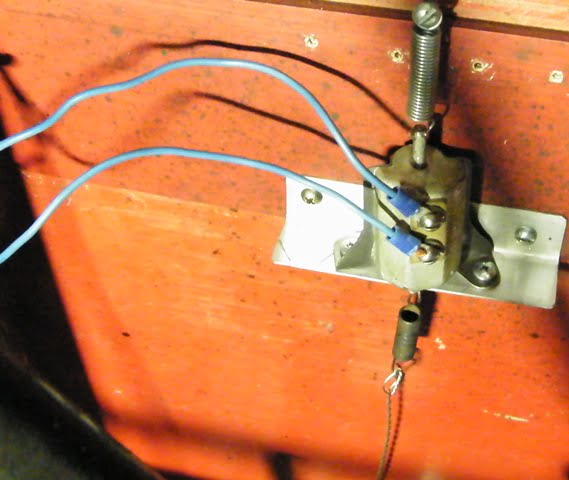
Another option for a brake light switch. We mounted a Model A Ford brake light switch – purchased for $5 at a swap meet – to the underside of the fixed floor board. The switch was disassembled and changed so that it is pulled to be “ON”. A wire and spring connect the switch to the brake pedal. This is a seriously low cost way to do it, parts cost under $10.

Many Model T’s did not come with a battery or charging system when new. You will need power to run any added lights. To power our brake light we added a lawn tractor battery under the rear seat. A fuse holder is mounted nearby. Spare fuses are attached to the rear of the body next to the fuse holder with self adhesive Velcro. We put the little battery on the charger every 30 days or so.
Let’s be safe out there!
